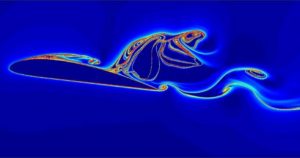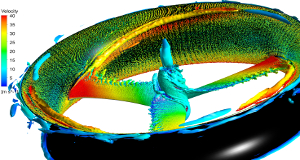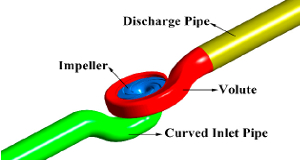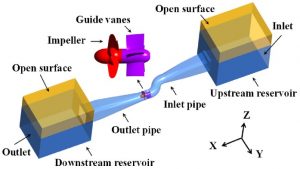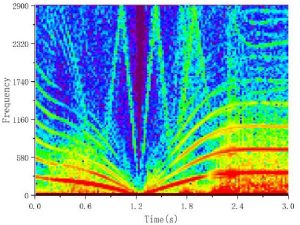研究活动
-
-
扩展了水轮机的工作范围,为集成可再生能源提供电力系统的灵活性和稳定性
-
基本空化研究和数值工具的开发
-
电能存储技术。
-
电厂动态建模和生命周期评估。
-
利用风镜技术开发带罩风力发电机。
-
泵表面粗糙度对性能和空化的影响
-
水下航行器上采用的水泵喷射器的开发。
-
专案
泵的空化现象
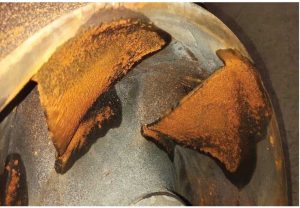
基于流动的可视化和不同工作条件下空化形态的识别,空化流场的演变规律和三维结构在几何和功能参数的基础上被定义。 对影响扩散和空化状态的控制因素的识别,将有可能确定一种优化叶轮和导叶等关键部件的水力模型的方法。
方法:数值模拟,实验分析
Design optimization of pump-turbine to improve the stable working range in both the operating modes
Improvement in the Pump-Turbine Stability
Improvement in the Pump-Turbine Stability of S-Shaped Characteristics by Optimum design and using so-called misaligned guide vanes (MGVs) technique.
Methods: Numerical Simulation, 3D Visualization, PIV, Experimental Analyses
Life Cycle Assessment
The Life Cycle Assessment (LCA) is nowadays one of the most accredited assessment method for the quantification of damage along the whole life of the processes or activities and its outcomes can be correlated to the impacts on human health, on the quality of ecosystems and on the consumption of natural resources. By means of this approach, the TES group members study different processes, with a particular focus on those related to the energy conversion (for example, electric energy production from PV, wind turbines, or biomass; energy storage devices). The SimaPro software is used to perform LCA analysis (SimaPro is a registered trademark of PRé Consultants).
Photovoltaic Module Cooling Systems
Photovoltaic (PV) cells are sensitive to temperature variations due to changes in the ambient conditions: temperature, wind and solar irradiance intensity. Specifically, an increase of the PV cells operating temperature leads to an almost linear reduction of their performance. To overcome this issue, TES group members have developed a low-cost cooling system. The feasibility of the proposal has been numerically evaluated by means of a “in-house” mathematical model developed in Matlab Environment. Then, the real performance of the proposed system are evaluated experimentally investigated using the developed facility installed on TES Lab.
Power Plant Dynamic Modelling
In the current energy scenario, electricity is produced by a mix of fossil fuel power units and renewable energy power plants. After the deregulation of the energy markets and the large penetration of renewables, fossil fuel units need to be managed in a flexible way to compensate the power fluctuation related to the unpredictability of renewable energy plants like wind and solar. This means fossil fuel power plants able to start-up, shut down or change the load in a couple of minutes or even seconds. Obviously, strong load changes require, on the one hand, high ramp rates and, on the other hand, produce thermal and mechanical stresses which reduce devices’ lifespan. To detect the most stressed components and compute their life reduction, the most powerful instrument is the DYNAMIC ANALYSIS. In TES group, fossil fuel units and renewables power plants are modelled in OPEN MODELICA Language with the aim of testing start-up/shut down procedures and maximum tolerable ramp rates. Using simulation results, the life reduction of the most stressed component is computed using an “in house” procedure called “LifeTime Estimation Procedure” (LTE). Using the LTE procedure, it is possible to develop new and more reliable management strategies characterised by power plant components reduce lifetime reduction.
Design Optimisation, Part-load Behaviour and Dynamic Performance Prediction of Waste Heat Recovery Units
Waste Heat Recovery Units like Organic Rankine Cycles, Air Bottoming Cycles, Steam Rankine Cycles, etc. are powerful cycles able to increase the energy efficiency of industrial processes. In TES group, two “in-house” codes have been developed to design these types of units using Matlab Environment. Based on the Optimisation results, the most performing fluids and plant configurations are tested in ASPEN and DYMOLA Environments to predict part-load and dynamic performance. The best configuration is then analysed from an economic and an exergetic point of view.


